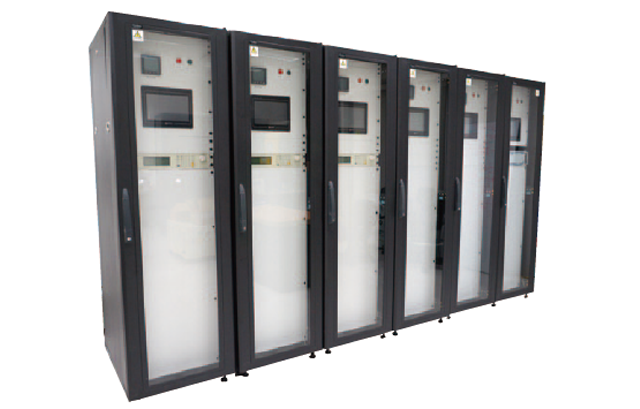|
Concerns with global warming prompt governments
throughout the world to pursue policies aiming at increasing
renewable energy generation so as to reduce greenhouse gases
produced by electricity generation from fossil fuels. However,
due to the intermittent characteristics of renewable energy
sources such as wind and solar power, it is a challenge for
systems with large renewable generation capacities to achieve
real-time balance between power generation and consumption,
without which power instabilities and even blackouts may
occur.
The key objective of this joint project by the University of Hong
Kong, the Hong Kong University of Science and Technology, and
the City University of Hong Kong is the integration of information
technologies and electric power technologies to design innovative
means to manage and control electricity generation and distribution
networks. For example, Phasor Measurement Units (PMUs) may
be deployed to better control a power grid with dynamic power
generation. These devices sense the currents and voltages in real
time, and provide data to the power grid operator for better and
more reliable control of the system to avoid blackouts. Nonetheless,
due to the high cost of PMUs and the limitations of communication
facilities, it is impractical to deploy PMUs throughout the entire
grid. Therefore, we have developed optimal PMU placement
strategies to minimize the cost. We have also been studying a new
concept called “electric springs” which may be used to achieve
power balance. Electric appliances with electric springs embedded
could be turned into a new generation of smart loads, with power demand following power generation. It is
envisaged that electric springs, when
distributed over the power grid, will offer
another power system stability solution. Yet
another possibility of accommodating highly
volatile renewable generation is an energy
storage system and we have developed an
optimal control algorithm of a battery system
for the grid-connected wind-storage system. |
|

Smart grid laboratory to test the research results developed in the project
Customer participation may also help stabilize
the grid. For example, differential pricing encourages customers to
consume electricity when the demand is low, while demand response
allows the grid to reduce the supply to selected customers
(incentivized with reduced rates) when the demand is high. To
facilitate such participation, an Advanced Metering Infrastructure
(AMI) with real-time two-way communications and a smart meter
deployed at each customer premise are required. Also, we must
ensure network security and preserve customer privacy. Otherwise,
an attacker may generate fake power requests, or even unauthorized
control signals in the power grid. If a
smart meter is compromised, an attacker
may be able to determine which
household has low electricity
consumption, thereby inferring which
customer is away from home and thus a
target for burglary. In this connection, we
have developed a secure power request
scheme as well as a system in which users'
private information such as daily electricity usage
patterns is kept secret from third parties as well as from the power
operator, while ensuring the power operator will be paid properly.
Research results of this project will provide the foundation for further
research on sustainable power delivery structures for high
renewables.
Prof Victor On Kwok LI
Department of Electrical and
Electronic Engineering
The University of Hong Kong
vli@eee.hku.hk
|
